- NEW DVD Series – Stone Setting with Bezels
- Tube Set Charm by Kim St. Jean
- Prong Basket Pendant by Kim St. Jean
- NEW DVD Series – Stone Setting with Cold Connections
- New DVD Series – Stone Setting with Wire
- NEW DVD Series: Introduction to Stone Setting by Kim St. Jean
- Featured Tool: Bracelet Bending Plier
- NEW Dvd by Eva Sherman
- Fun, Fast Fold Forming DVD Series
- Double Band Ear Cuff from Alex Simkin
Buying Jump Rings Part 1: Avoiding the Pitfalls
by Judy Ellis, Wirejewelry.com
Wire Jewelry Article for July 20th 2016
Buying Jump Rings Part 1: Avoiding the Pitfalls
by Marilyn Gardiner
Today we feature Part 1 of a two part series called Buying Jump Rings Part 1: Avoiding the Pitfalls.
Marilyn Says:
If you are a relative beginner to making jewelry with chain mail, you’ve probably used a kit or taken a class with an instructor who has either supplied the rings or pointed to the ones to purchase.
Now you want to:
- Buy different rings to re-make the same piece, or
- Buy rings in a different gauge to make the piece that is more delicate or heavier, or
- Look for a tutorial for a different project and buy the necessary rings
Today’s Question:
Let’s say you made a Byzantine bracelet with bright aluminum rings, and you used 18 gauge rings with an inside diameter of 5/32″. Now you want to make a similar one in sterling silver as a gift for your mother.
Why is This a Problem?
You used 18 gauge aluminum rings. But base metal rings, such as aluminum, are frequently made using the SWG system – while precious metal rings are usually made using the AWG system.
Wire Diameter/WD:
The wire gauge is a measure of the thickness of the wire (the wire diameter or WD). The bigger the number, the thinner the wire. There are two common gauge systems:
- American Wire Gauge (AWG) (sometimes called B&S for Browne & Sharpe)
- British Standard Wire Gauge (SWG). 18 gauge SWG is heavier than 18 gauge AWG.
Because I want to use sterling silver rings, I will need to find the WD I want in the AWG system. Fortunately there are charts (see the resource information below) that will help you switch between these two systems.
When I look at the charts, the 18 gauge (SWG) wire I used has a WD = 1.22 mm. Because I want a similar size of wire, I plan to choose 16 gauge (AWG) which has a WD = 1.29 mm.
Jump Ring Size ID:
The inside diameter (or ID) in our question is 5/32″. Typically, jump rings using SWG gauges are measured in fractions of an inch. But, AWG rings typically use metric measurements.
I could change the 5/32 in. to a decimal fraction, then figure out how to convert it from Imperial to Metric—but there’s a better way. There are charts for that! See the link below. I used a chart to change the fractions of an inch to millimeters. ID = 5/32 in. = 3.97 mm
Use Your Calculator: Aspect Ratio AR
To answer the question above, you only have to know the wire diameter and inside diameter of the rings that you used and then divide those numbers on a calculator.
Here’s the easy way to find the answer to our question.
- You know that the ID is 3.97 mm because we used a chart.
- You know that you used 18 SWG rings and that we used a chart to find out that the WD is 1.22 mm.
- Take out your calculator and divide ID / WD or 3.97 mm divided by 1.22 mm. My calculator says 3.3 mm (rounded). This magic number is called the Aspect Ratio or AR
- Go to the chart for 16 AWG jump rings. Scan down the column that gives the AR to find the one that is closest – and Bingo! – A 16 AWG jump ring with an ID of 4.25 mm has an AR of 3.3. Notice that a 4.5 mm jump ring has an AR of 3.5. Either of these sizes of jump rings will work well for your sterling silver Byzantine Bracelet.
Resources: Where to Find the Charts:
The book Chain Maille Jewelry Workshop by Karen Karon has all of these charts at the back of her excellent book. I keep it handy for reference.
Here are some internet links:
ID: Chart for fractions of an inch to millimeters: CLICK HERE
WD: Chart for wire gauge conversions: CLICK HERE
Jump ring gauge converter tool: CLICK HERE
I hope you enjoyed Part 1 of this 2 part series about Buying Jump Rings from Marilyn. If you’d like to see more of Marilyn’s blog posts – CLICK HERE!
Happy Wrapping!
![]()
Click to Receive Daily Tips by Email






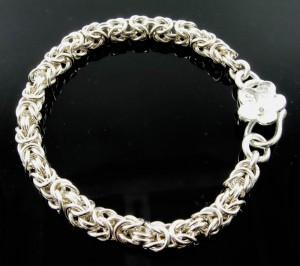
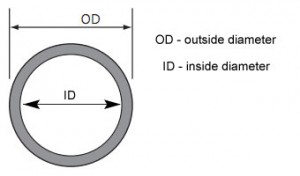

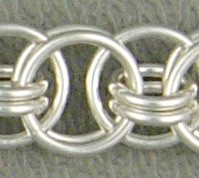
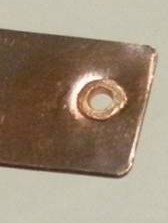

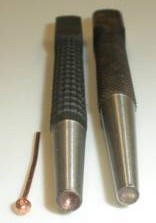














0 comments